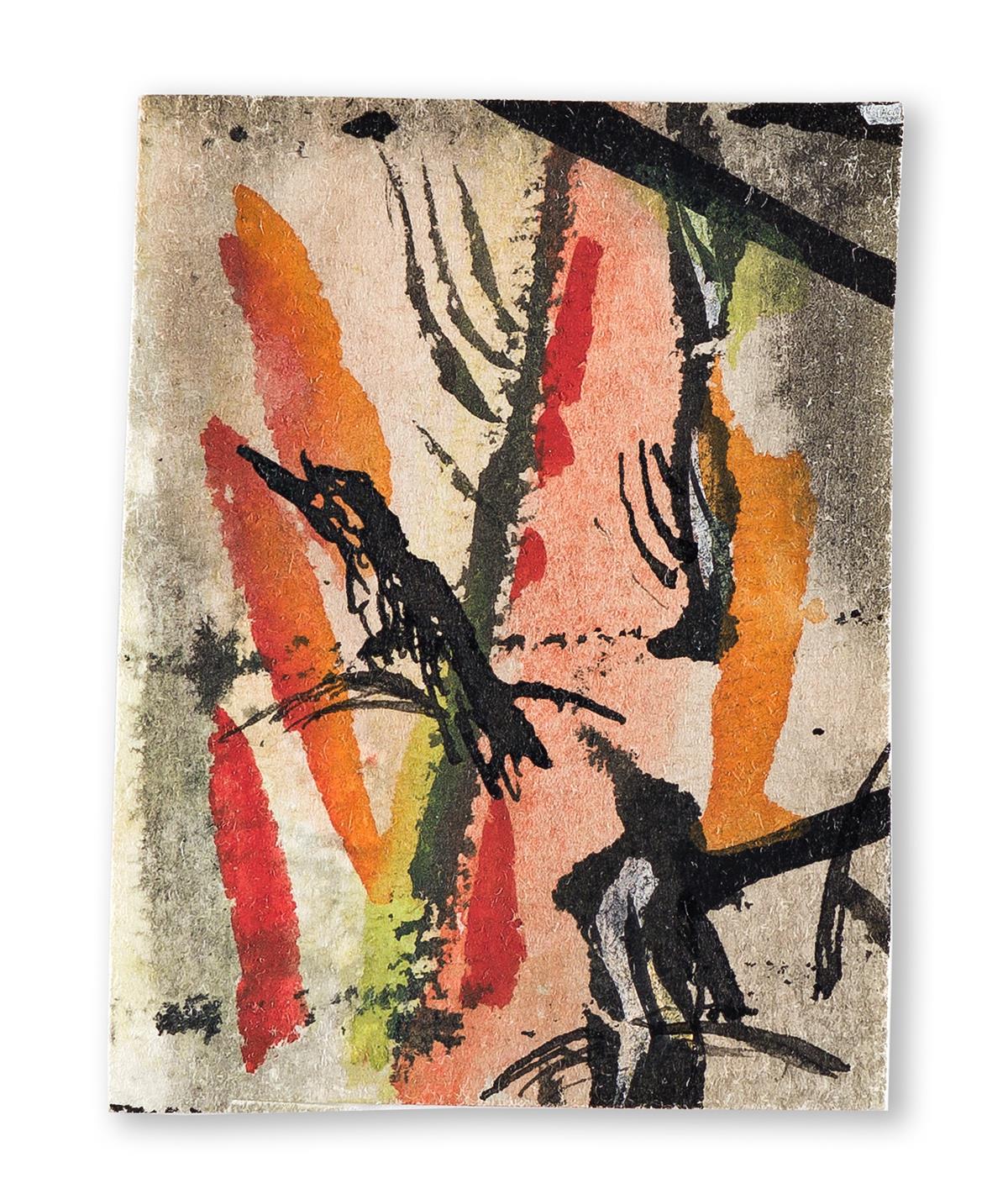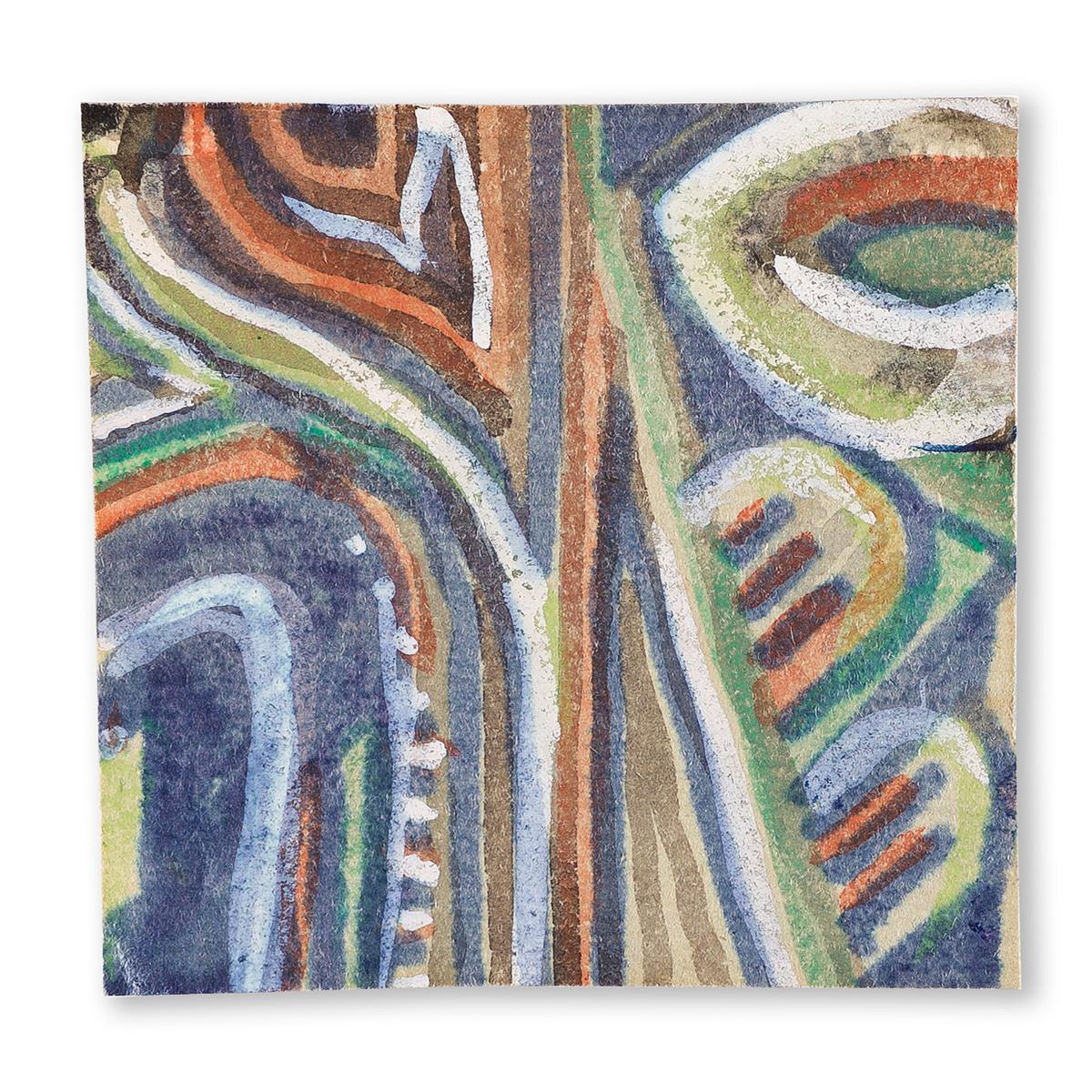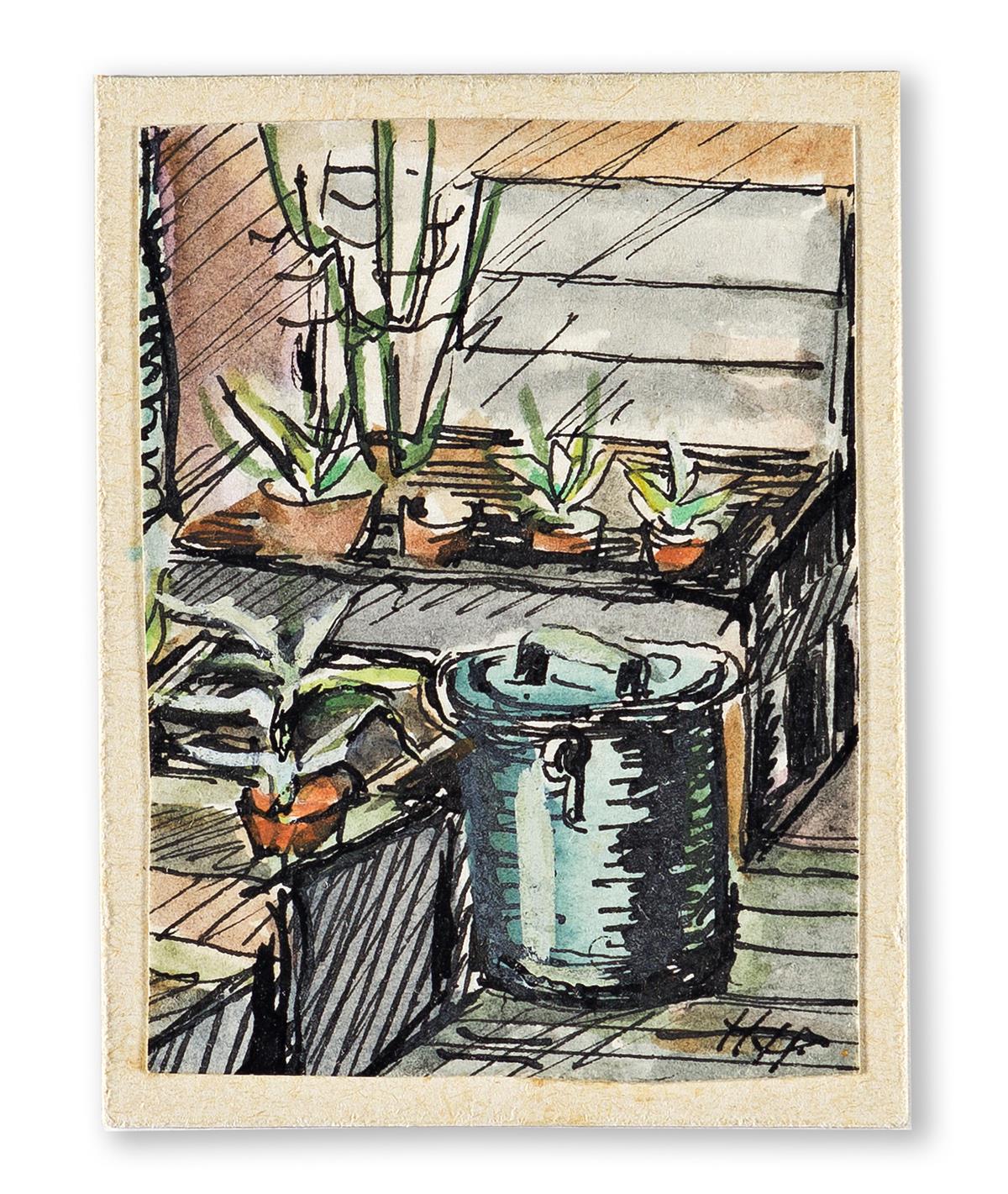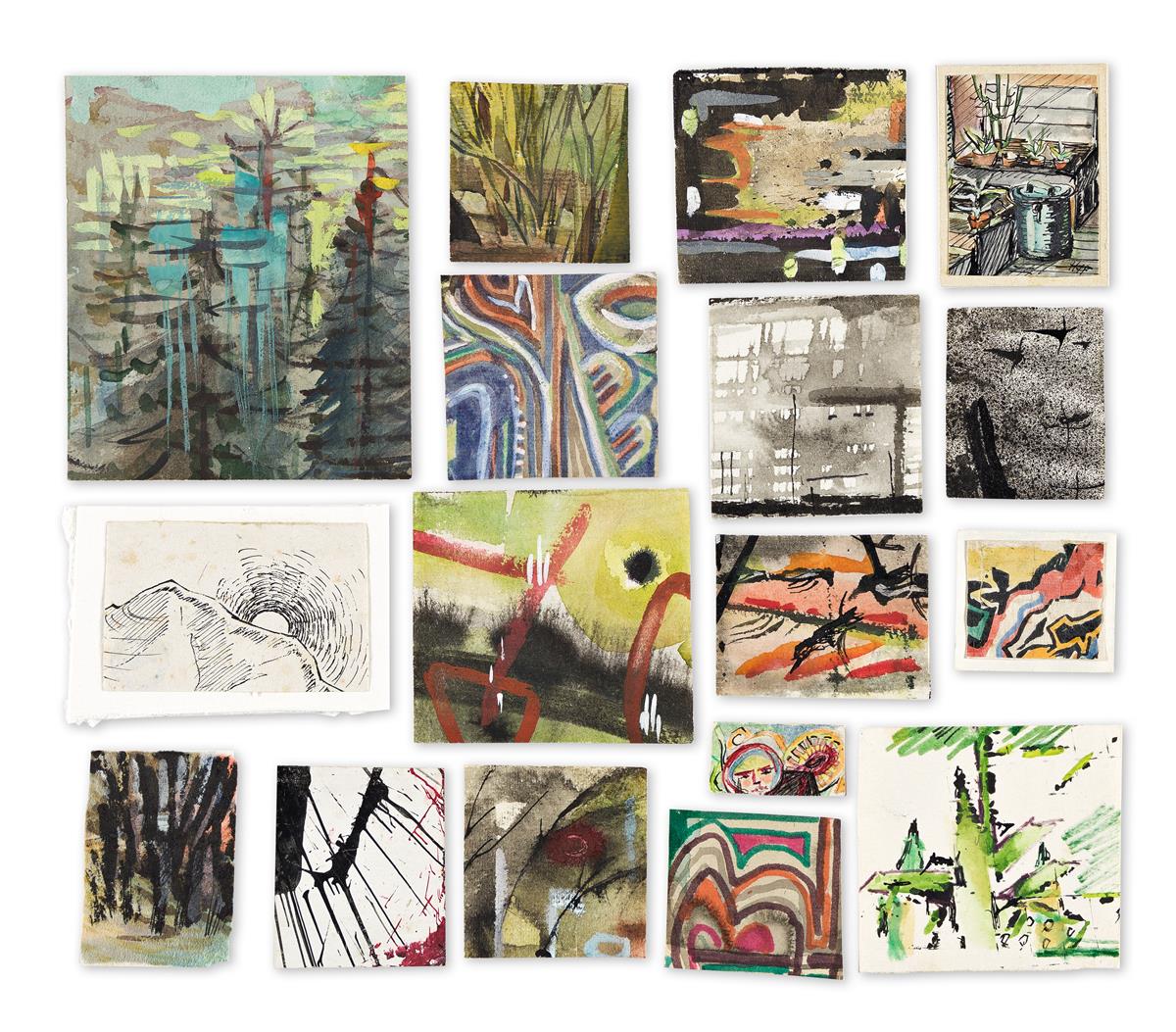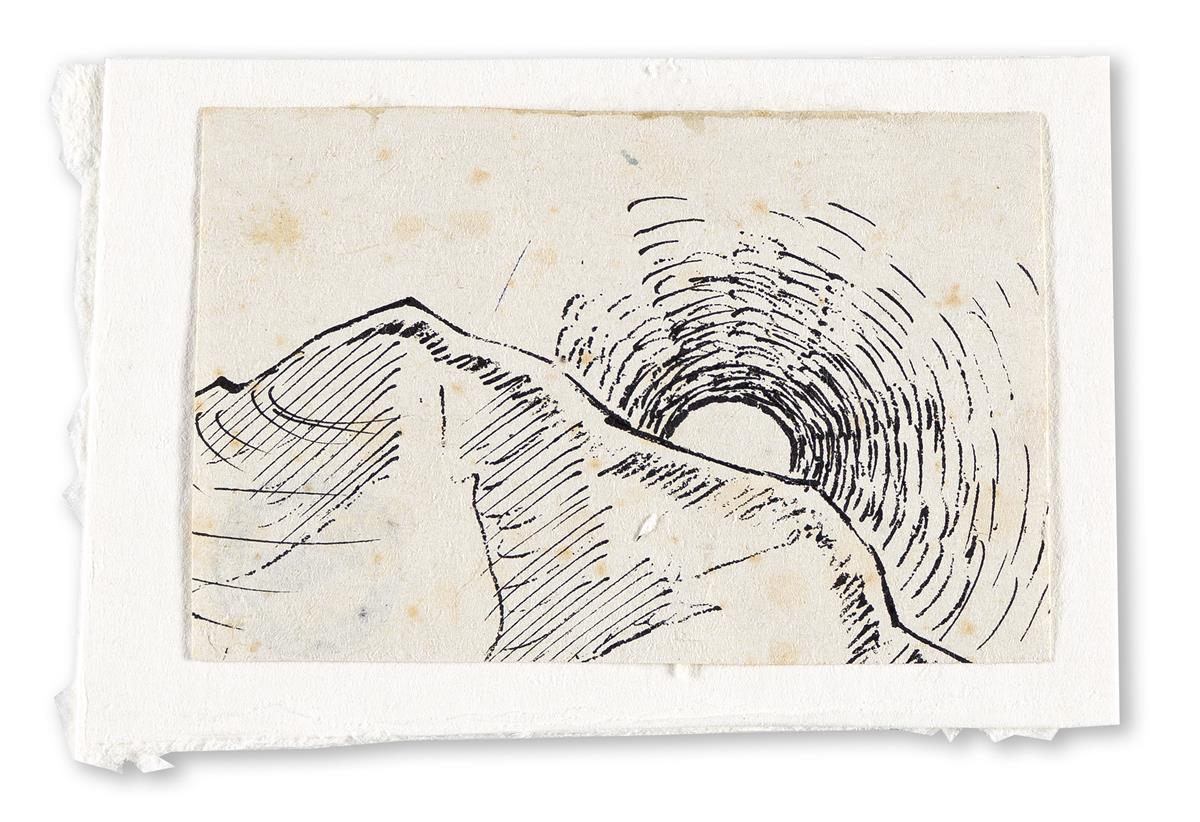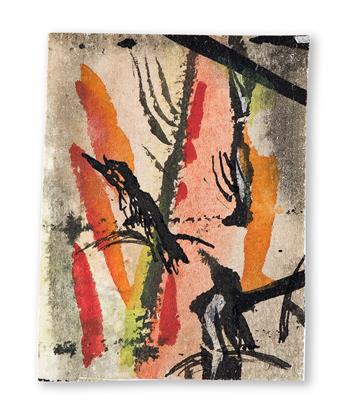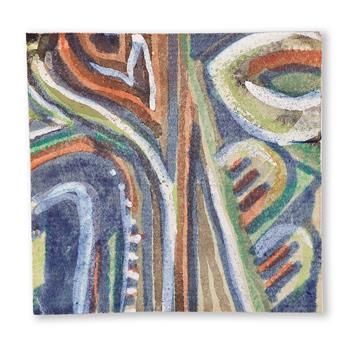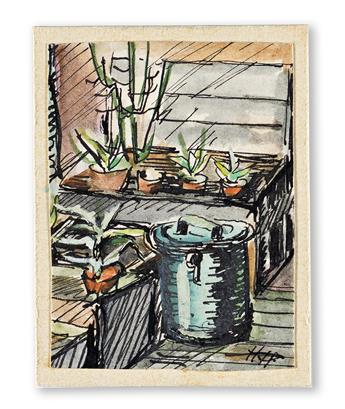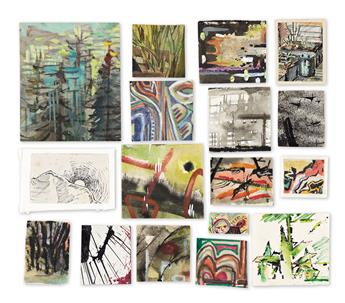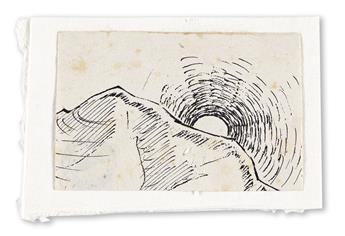Sale 2630 - Lot 155
Price Realized: $ 7,500
Price Realized: $ 9,375
?Final Price Realized includes Buyer’s Premium added to Hammer Price
Estimate: $ 10,000 - $ 15,000
HANNAH HÖCH
Collection of 17 watercolor, gouache, ink and wash drawings.
Circa 1940. Largest 113x92 mm; 4 1/2x3 3/4 inches; smallest 22x37 mm; 1x1 1/2 inches. Each with the artist's estate ink stamp and annotation verso.
Provenance: Estate of the artist, Berlin; thence by descent to the artist's sister, Grete König, Hamburg; private collection, Germany; Gilden's Arts U.K. Limited, London; private collection, Vermont.
Höch (1889-1978) was an important German Dada artist. She is best known for her work during the Weimar period and through World War II, when she was one of the originators of photomontage, a type of collage in which the pasted items are actual photographs, or photographic reproductions. Through her art work Höch sought to dismantle the fable and dichotomy that existed in the concept of the feminist ideal of the "New Woman." She also explored themes of androgyny, political discourse and shifting gender roles.
Born in Gotha, she worked in the Red Cross during World War I, and trained in Berlin with the Czech artist Emil Orlik. From 1916 to 1926, she worked in the handicrafts department for the publisher Ullstein Verlag, designing dress, embroidery, lace and handiwork designs for women's magazines. The impact of this early work and training can be seen in a number of her collages made in the late 1910s and early- to mid-1920s in which she incorporated sewing patterns and needlework designs. From 1926 to 1929 she lived and worked in the Netherlands. Höch formed friendships and professional relationships during her career with fellow avant-garde artists such as Kurt Schwitters, Nelly and Theo van Doesburg, Sonia Delaunay, László Moholy-Nagy and Piet Mondrian, among others.
Höch's involvement with the Berlin Dadaists began in earnest in 1917. As the only woman among the Berlin group, she was singled out for her self-sufficiency, masculine presentation and bisexuality, as she consistently addressed themes of the "New Woman," including the right to vote, the freedom to initiate and enjoy sexual encounters, and financial liberty. Höch spent the years of the Third Reich in Berlin, under a low profile. She was the last member of the Berlin Dada group to remain in Germany during this period. She bought and lived in a small garden house in Berlin-Heiligensee, a remote area on the outskirts of Berlin, where she likely made the current small-scale, intimate drawings. Though her work was not as acclaimed after the war as it had been before the rise of the Third Reich, she continued to produce art work and exhibit internationally throughout her career.
Collection of 17 watercolor, gouache, ink and wash drawings.
Circa 1940. Largest 113x92 mm; 4 1/2x3 3/4 inches; smallest 22x37 mm; 1x1 1/2 inches. Each with the artist's estate ink stamp and annotation verso.
Provenance: Estate of the artist, Berlin; thence by descent to the artist's sister, Grete König, Hamburg; private collection, Germany; Gilden's Arts U.K. Limited, London; private collection, Vermont.
Höch (1889-1978) was an important German Dada artist. She is best known for her work during the Weimar period and through World War II, when she was one of the originators of photomontage, a type of collage in which the pasted items are actual photographs, or photographic reproductions. Through her art work Höch sought to dismantle the fable and dichotomy that existed in the concept of the feminist ideal of the "New Woman." She also explored themes of androgyny, political discourse and shifting gender roles.
Born in Gotha, she worked in the Red Cross during World War I, and trained in Berlin with the Czech artist Emil Orlik. From 1916 to 1926, she worked in the handicrafts department for the publisher Ullstein Verlag, designing dress, embroidery, lace and handiwork designs for women's magazines. The impact of this early work and training can be seen in a number of her collages made in the late 1910s and early- to mid-1920s in which she incorporated sewing patterns and needlework designs. From 1926 to 1929 she lived and worked in the Netherlands. Höch formed friendships and professional relationships during her career with fellow avant-garde artists such as Kurt Schwitters, Nelly and Theo van Doesburg, Sonia Delaunay, László Moholy-Nagy and Piet Mondrian, among others.
Höch's involvement with the Berlin Dadaists began in earnest in 1917. As the only woman among the Berlin group, she was singled out for her self-sufficiency, masculine presentation and bisexuality, as she consistently addressed themes of the "New Woman," including the right to vote, the freedom to initiate and enjoy sexual encounters, and financial liberty. Höch spent the years of the Third Reich in Berlin, under a low profile. She was the last member of the Berlin Dada group to remain in Germany during this period. She bought and lived in a small garden house in Berlin-Heiligensee, a remote area on the outskirts of Berlin, where she likely made the current small-scale, intimate drawings. Though her work was not as acclaimed after the war as it had been before the rise of the Third Reich, she continued to produce art work and exhibit internationally throughout her career.
Exhibition Hours
Exhibition Hours
Aliquam vulputate ornare congue. Vestibulum maximus, libero in placerat faucibus, risus nisl molestie massa, ut maximus metus lectus vel lorem.



